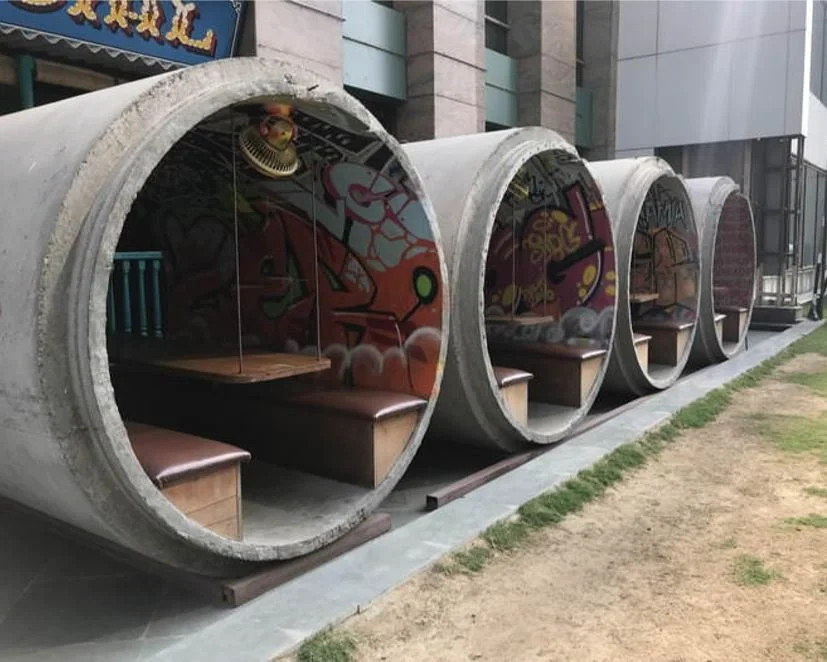Covid-19 Food Truck Bazaar
Due to Covid-19, the food truck industry has been struggling to keep a steady cash flow. Most food truck companies depend on businesses and festivals for their consumers. Since Coronavirus, the food truck industry has taken a different approach to gain recognition from potential consumers. Companies have transitioned from commercial locations to residential areas and have adjusted to the use of interactive maps to allow consumers to pinpoint their locations.
Dining in the Age of Coronavirus In conjunction with food trucks and restaurants’ daily take-out regiments, outdoor dining has become the new dining experience. Outdoor dining encourages clientele to appropriately social distance. As restrictions slowly lift, indoor dining encourages these acts by accommodating accurate occupancy.
The use of an old factory building to set up tables without a need for a kitchen/back of the house creates the perfect opportunity for adaptive reuse with minimal rebuild. As restrictions loosen, the indoor fixtures allow for several different arrangements to adjust to the applicable occupancy. For outdoor seating, clientele can socially distance themselves on the grass areas designated by the picnic circles or a repurposed sewer canal for dining.
Solutions Utilizing Minimal Change Adaptable biophilia connects the end-user to nature while dining indoors. The planter also divides the dining space. This solution provides the opportunity to allow multiple food truck companies with less capital to build a following a chance to pull up to the building to reach revenue goals. This allows the industry to operate year-round.
For the sewer canals, you have the options to dine inside the sewer canal or on the rooftop. The attached stairs lead to lofted seating space for picnics off the grass.











